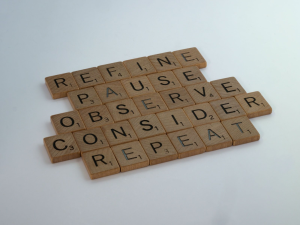 By Ujjaini Lahiry
By Ujjaini LahiryLead Designer
Yahoo!
As a Product Designer, I have witnessed the evolution of the product development process, across both tech and non-tech industries. The development process, and especially the design phase, has become very iterative based on four key themes that I have highlighted below:

1. Prototype, Test, Iterate
The process of user experience (UX) is all about collaboration. We get feedback, we design, regroup with product managers, engineers and stakeholders, we iterate, test with users, and iterate more till we get to a point where we can start building.
During a lot of my ongoing projects, after prototype and testing, we received feedback that either never surfaced so boldly or new insights came out just because users were now able to visualize better. This is often a turning point for the process and often for the better.
2. Design for Users first
Business goals are critical. But the needs of the users should take precedence over the desires and assumptions of those setting these business goals. Example: In a pizza shop, they want to sell more pies, make money and scale up to continue doing more. But what if the customers do not like the pizza? None of the business dreams are realized. Similarly, while designing for users, we need to remember that our design should solve user problems or delight them!
3. Lean UX is the foundation of something big
A Minimum Viable Product (MVP) is always a part of a successful UX process. Once we begin understanding the user needs and the business problems we already have, some kind of idea about what the UX journey would entail will start to emerge. And once we build the MVP, we can always build on top of it to make the product more desirable.
UX Design is an iterative process. We cannot come up with every feature, or enhancement on Day One, and nor should we aim for it. We need to understand the most basic user needs that we are designing for. If Google didn’t start with a search, then users would have never known how to use its Map.
4. Inspiration is good
Inspiration is always a process of growing and learning. It’s not unethical, as long as we credit where it’s due. We learn when we look at case studies and draw our own learnings from them, and I think that’s what is so unique to the individual. The relevance of the case study and the observer’s perception. Some believe that Leonardo Da Vinci’s Mona Lisa is a self-portrait by the artist, while others don’t.
The Counter Argument
Waterfall, a sequential model for planning and designing new products, has become a bad word across organizations big and small. These companies are quick to point out that they are agile across all aspects of ideation, design, development, and launch. However, quite a few organizations are also falling into a rabbit hole of getting into the development phase without maturing the idea through the ideation and design phase – motivated by the fact that they want to be looked upon as agile organizations.
In conclusion, iterating on the ideation and design using the above themes and then going into development with a more mature idea is a good model of efficient and customer-centric development.
Ujjaini Lahiry is a Senior Product Designer and Lead at Yahoo AdTech, which is one of the top 5 DSP platforms globally. Previously, she was Senior Product Designer – ML/AI Platform, Digital Innovation at EY. Ujjaini participates in Yahoo’s Design council and has published internal and external articles with the objective of sharing best practices.
Having worked in India and New York, Ujjaini brings a global perspective and loves to share her experiences through speaking engagements in digital product, design and innovation focused events. She aims to solve complex problems and bring business ideas to life, through sketching, wire framing, prototyping, designing, testing, and writing.


Recent Comments